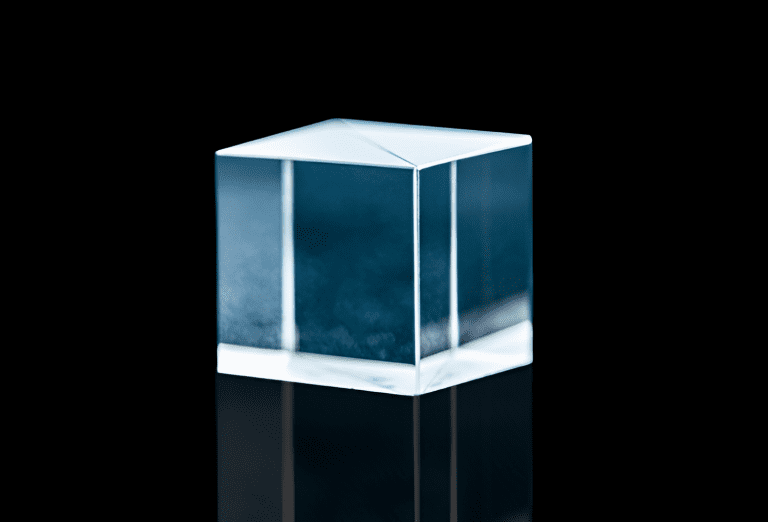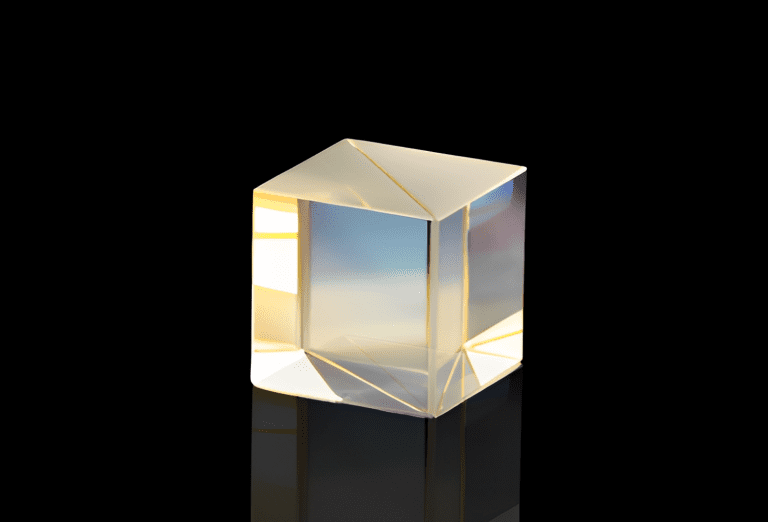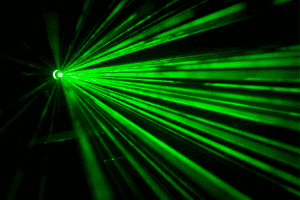Narrowband Beamsplitter Cube
A narrowband beamsplitter cube is an optical device used to split a beam of light into two or more separate beams based on the wavelength or frequency of the light. While polarizing cube beamsplitters function to separate light based on polarization, narrowband beamsplitter cubes selectively transmit or reflect light based on a specific wavelength range. They are designed to work within a narrow range of wavelengths, typically in the visible or near-infrared spectrum, and are commonly used in optical instruments and applications, including microscopy, spectroscopy, and laser systems.



Here’s how a narrowband beamsplitter cube typically works:
- Cube Design: The beamsplitter cube is usually made from high-quality optical glass or crystal materials, such as BK7, fused silica, or other specialized materials with specific optical properties.
- Dielectric Coating: The cube’s surfaces are coated with a dielectric coating, designed to have high reflectance for a certain range of wavelengths and high transmittance for another range. The specific design of the coating determines the narrowband spectral characteristics of the cube.
- Incoming Light: When a beam of light enters the beamsplitter cube, part of the light is transmitted through the cube, while the rest is reflected at a right angle. The division of light between transmission and reflection depends on the cube’s coating and is typically specified as a percentage, such as 50/50 (equal division) or other ratios.
- Wavelength Dependence: Narrowband beamsplitter cubes are designed to be wavelength-dependent, meaning they work optimally within a certain range of wavelengths. Light within this range is split into transmitted and reflected beams according to the cube’s specifications, while light outside this range may behave differently.
- Applications: Narrowband beamsplitter cubes are used in various optical setups where it’s necessary to separate or combine light of specific wavelengths. For example, in fluorescence microscopy, a beamsplitter cube may be used to separate excitation and emission wavelengths, allowing researchers to observe specific fluorescence signals.
- Polarization Considerations: Some cubes are designed to be polarization-dependent, meaning they may behave differently for different polarization states of light. This can be advantageous in applications where polarization control is important.
Narrowband beamsplitter cubes are precision optical components, and their design and manufacturing require careful consideration of the desired wavelength range, the angle of incidence, and other factors. Choosing the right beamsplitter cube for a particular application is crucial to ensure optimal performance and accurate results.
Factory Standard
Material | Schott, Ohara, CDGM Optical Glass, Corning fused silica, JGS1, JGS2 |
Dimensions | +/- 0.2mm |
Flatness | l/4 @ 632.8 nm |
Surface Quality | 60/40 scratch and dig |
T/R, | 50/50+/- 5% for natural light |
Beam Deviation | <3 arc minutes |
Coatings | Single wavelength partial reflectance on hypotenuse face |
Custom Narrowband Beamsplitter Cube
Avantier’s narrowband beamsplitter cube is a high power, precision optical device designed to split light based on wavelength, functioning within a specific range. Consisting of a pair of precision-aligned prisms made from high-quality materials such as Schott glass and fused silica, they offer precise dimension tolerance, flatness, and surface quality. With a 50/50 ± 5% T/R ratio for natural light, minimal beam deviation, and specialized coatings, they are ideal for applications like microscopy and spectroscopy. Our custom narrowband beamsplitter cube enables accurate wavelength-dependent light manipulation, essential for optical research and analysis.
Please contact us to schedule a consultation or request a quote for your next project.
WE CAN HELP YOU!
Contact us NOW for sales & expert advice.







